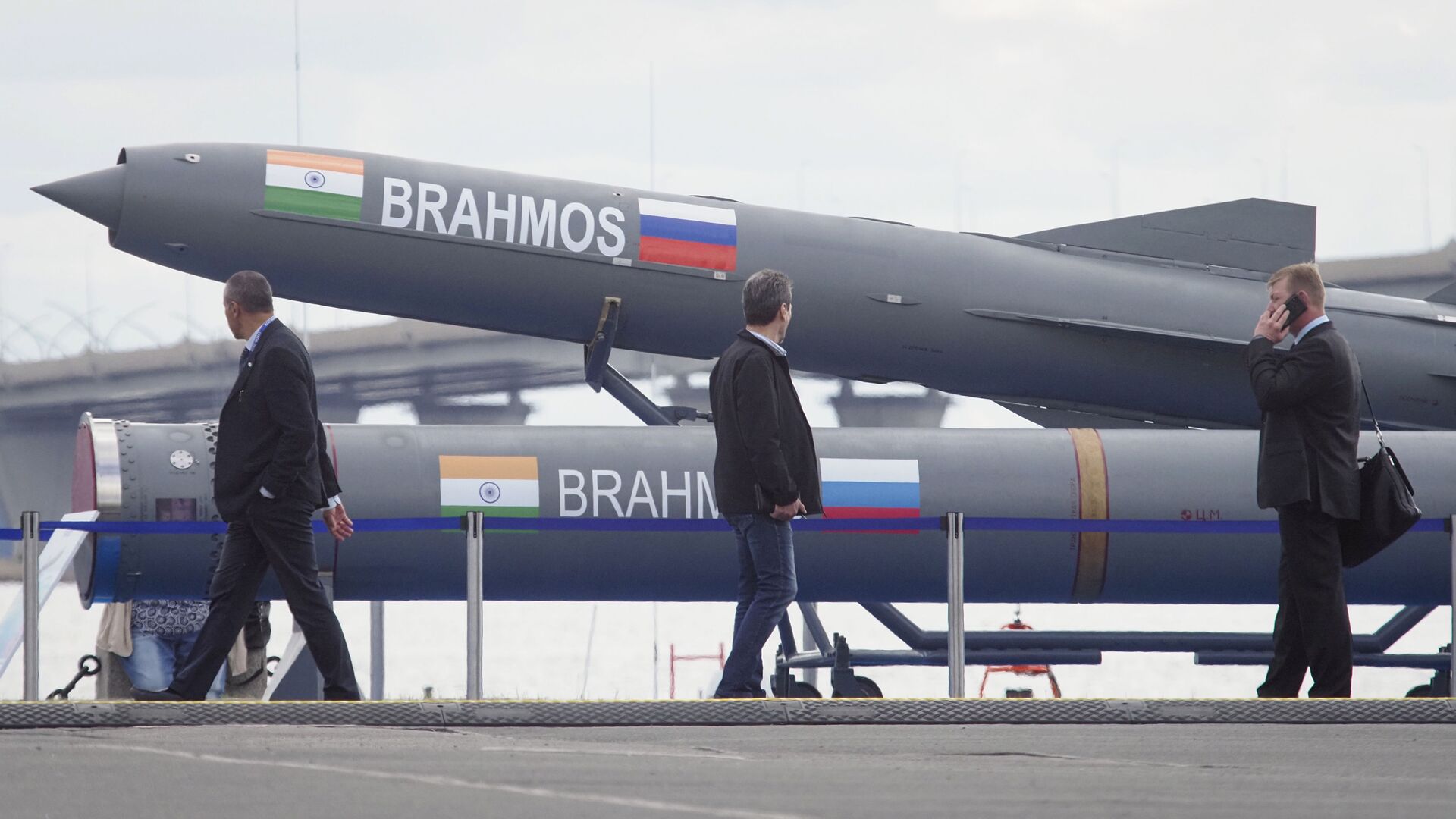https://sputnikglobe.com/20220829/brahmos-hypersonic-missile-may-be-created-in-2027-2028-co-director-of-indo-russian-venture-says-1100107458.html
BrahMos Hypersonic Missile May Be Created in 2027-2028, Co-Director of Indo-Russian Venture Says
BrahMos Hypersonic Missile May Be Created in 2027-2028, Co-Director of Indo-Russian Venture Says
Sputnik International
The BrahMos missile is a ramjet-propelled supersonic cruise missile launched from submarines, ships, aircraft, or land. The Indo-Russian venture had... 29.08.2022, Sputnik International
2022-08-29T11:08+0000
2022-08-29T11:08+0000
2022-08-29T11:08+0000
military
brahmos
brahmos cruise missile
russia
india's defense research and development organization (drdo)
hypersonic
stealth
indian navy
phillippines
indian ocean
https://cdn1.img.sputnikglobe.com/img/107804/97/1078049733_0:0:3373:1898_1920x0_80_0_0_8d543fa4b977c09b747516ef72385a30.jpg
The joint Russian-Indian venture BrahMos Aerospace may create a hypersonic missile in 2027-2028, co-director Alexander Maksichev has told Sputnik.The present version of the missile travels at speeds of Mach 2.8 to 3.0, which is being upgraded to more than Mach 7 (seven times the speed of sound) for the hypersonic version.While scientists have only a little tinkering to do to increase the speed of the BrahMos to Mach 5, they will have to replace the engine to achieve hypersonic speeds.Maksichev added that the portfolio of orders for missiles from the joint Russian-Indian venture BrahMos Aerospace amounts to almost $6.5 billion.This year, the co-director said the company had signed the first export contract for the supply of missiles to the Philippines worth $375 million.The first deliveries of the BrahMos supersonic cruise missiles to the Philippines will begin in 2023, the BrahMos Aerospace co-director said.The $375 million deal for the supply of BrahMos missiles to the Philippines was reached in January and is the first export contract for BrahMos Aerospace.He said the missiles will be used to equip all of the most combat-ready and well-armed ships of large displacement in the Indian Navy (cruisers, destroyers, and frigates). The BrahMos Aerospace official said 45 Philippine military officers have already been trained in India under the export contract.Besides Russian institutes, Indian scientists from the Defense Research and Development Organization, the Indian Institute of Technology, and the Bengaluru-based Indian Institute of Science are working on technologies to develop an upgraded version of the BrahMos missile.The joint Russian-Indian venture was established in 1998, and is currently focuses on the hypersonic version of the missile for naval-, underwater-, shore-, and air-based platforms.
russia
indian ocean
Sputnik International
feedback@sputniknews.com
+74956456601
MIA „Rossiya Segodnya“
2022
Sputnik International
feedback@sputniknews.com
+74956456601
MIA „Rossiya Segodnya“
News
en_EN
Sputnik International
feedback@sputniknews.com
+74956456601
MIA „Rossiya Segodnya“
Sputnik International
feedback@sputniknews.com
+74956456601
MIA „Rossiya Segodnya“
brahmos, brahmos cruise missile, russia, india's defense research and development organization (drdo), hypersonic, stealth, indian navy, phillippines, indian ocean
brahmos, brahmos cruise missile, russia, india's defense research and development organization (drdo), hypersonic, stealth, indian navy, phillippines, indian ocean
BrahMos Hypersonic Missile May Be Created in 2027-2028, Co-Director of Indo-Russian Venture Says
The BrahMos missile is a ramjet-propelled supersonic cruise missile launched from submarines, ships, aircraft, or land. The Indo-Russian venture had significant success this year, with the Philippines signing an agreement to purchase the anti-ship missile for its armed forces.
The joint Russian-Indian venture BrahMos Aerospace may create a hypersonic missile in 2027-2028, co-director Alexander Maksichev has told Sputnik.
"Work is underway. There are still five or six years left; priorities of the customer and requirements are changing," Maksichev said.
The present version of the missile travels at speeds of Mach 2.8 to 3.0, which is being upgraded to more than Mach 7 (seven times the speed of sound) for
the hypersonic version.While scientists have only a little tinkering to do to increase the speed of the BrahMos to Mach 5, they will have to replace the engine to achieve hypersonic speeds.
Maksichev added that the portfolio of orders for missiles from the joint Russian-Indian venture BrahMos Aerospace amounts to almost $6.5 billion.
This year, the co-director said the company had signed the first export contract for the supply of missiles to the Philippines worth $375 million.
"BrahMos' portfolio of orders currently stands at more than $6 billion, approaching $6.5 billion. The increase was, among other things, due to the signing of the contract with the Philippines," Maksichev said.
The first deliveries of the
BrahMos supersonic cruise missiles to the Philippines will begin in 2023, the BrahMos Aerospace co-director said.
The $375 million deal for the supply of BrahMos missiles to the Philippines was reached in January and is the first export contract for BrahMos Aerospace.
"The first deliveries of the missiles will begin in 2023. These will be missiles for coastal defense, a coastal missile system," Maksichev told Sputnik.
He said the missiles will be used to equip all of the most combat-ready and well-armed ships of large displacement in the Indian Navy (cruisers, destroyers, and frigates).
The BrahMos Aerospace official said 45 Philippine military officers have already been trained in India under the export contract.
Besides Russian institutes, Indian scientists from the Defense Research and Development Organization, the Indian Institute of Technology, and the Bengaluru-based Indian Institute of Science are working on technologies to develop an upgraded version of the BrahMos missile.
The joint Russian-Indian venture was established in 1998, and is currently focuses on the hypersonic version of the missile for naval-, underwater-, shore-, and air-based platforms.


